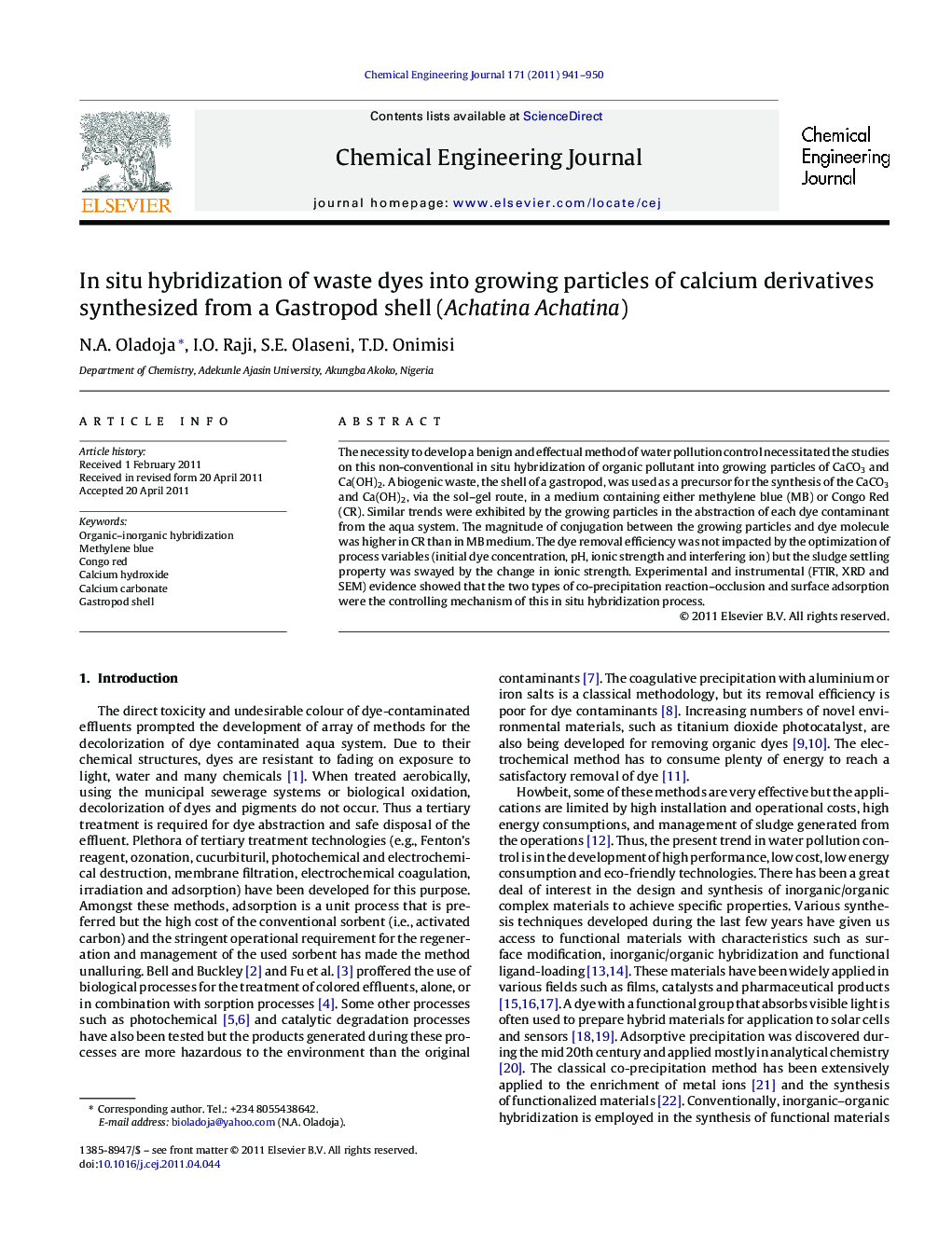| کد مقاله | کد نشریه | سال انتشار | مقاله انگلیسی | نسخه تمام متن |
|---|---|---|---|---|
| 150886 | 456459 | 2011 | 10 صفحه PDF | دانلود رایگان |

The necessity to develop a benign and effectual method of water pollution control necessitated the studies on this non-conventional in situ hybridization of organic pollutant into growing particles of CaCO3 and Ca(OH)2. A biogenic waste, the shell of a gastropod, was used as a precursor for the synthesis of the CaCO3 and Ca(OH)2, via the sol–gel route, in a medium containing either methylene blue (MB) or Congo Red (CR). Similar trends were exhibited by the growing particles in the abstraction of each dye contaminant from the aqua system. The magnitude of conjugation between the growing particles and dye molecule was higher in CR than in MB medium. The dye removal efficiency was not impacted by the optimization of process variables (initial dye concentration, pH, ionic strength and interfering ion) but the sludge settling property was swayed by the change in ionic strength. Experimental and instrumental (FTIR, XRD and SEM) evidence showed that the two types of co-precipitation reaction–occlusion and surface adsorption were the controlling mechanism of this in situ hybridization process.
► In situ hybridization is benign and eco-friendly to use to treat dye polluted water.
► Dye removal efficiency was not impacted by the optimization of process variables.
► Co-precipitation, from the experimental evidence, is the mechanism of dye removal.
Journal: Chemical Engineering Journal - Volume 171, Issue 3, 15 July 2011, Pages 941–950